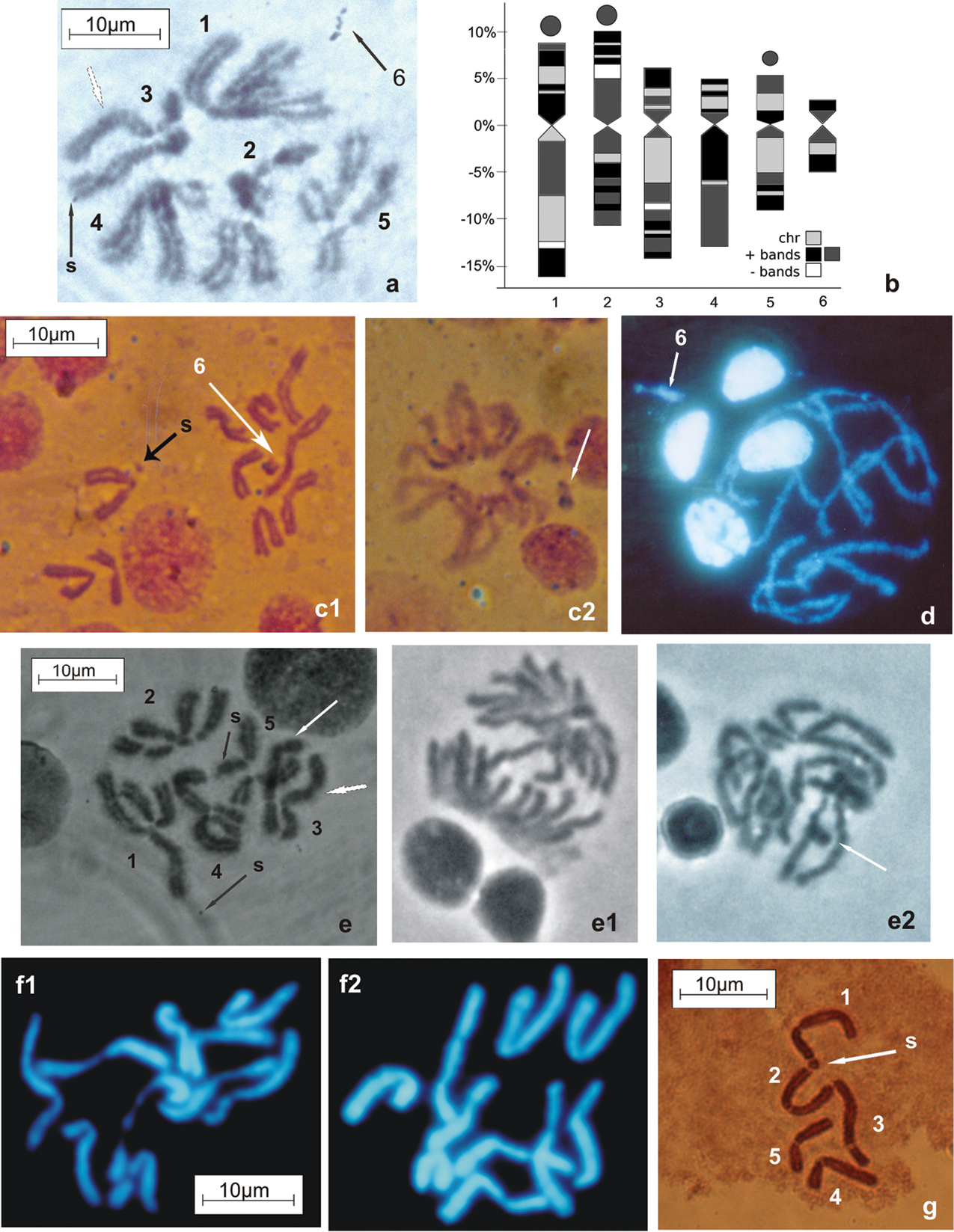
|
||
|
Chromosome variants in H. irritans. a–f mitotic plates from larval brain cells. a Giemsa C-banded metaphase plate with 2n=11 and karyotype VI; black arrow indicates B-chromosome, white arrow indicates relocation of secondary constriction on the curved long arm of one homologue of pair 3, “s” indicates satellite on chromosome 3 b Composite C-banding idiogram showing some chromosome variants found in different specimens c Giemsa C-banded metaphases with 2n=11 found in the same larva with karyotype VII; white arrow indicates B-chromosome, black arrow indicates satellite on metacentric chromosome 2 d Hoechst 33258 stained prometaphase with 2n=11 carrying complex rearrangements; white arrow indicates B-chromosome e Giemsa stained C-banded metaphase with 2n=10 and heteromorphic pairs 3 and 4; black arrows indicate satellites on chromosomes 1 and 5, white arrows indicate both long arms of pair 3 with one of them carrying an attached B-chromosome e1 anaphase with a bridge e2 metaphase from the same specimen as in e and e1; white arrow indicates rearrangement in one of the homologues of pair 3, black arrow on pair 4 f Hoechst 33258 stained metaphases with 2n=10 and karyotype XV carrying complex rearrangements g Orcein stained meiotic metaphase II from testis with karyotype V; white arrow indicates satellite on chromosome 1. |